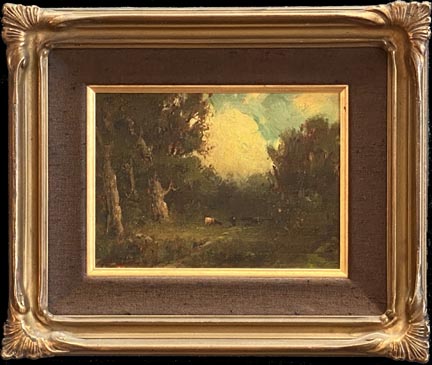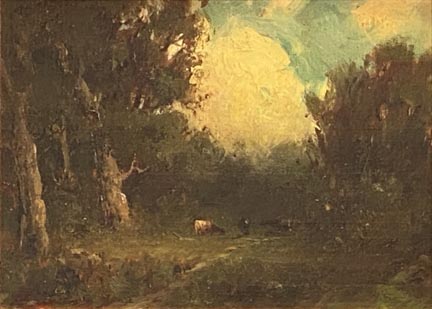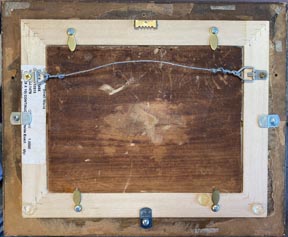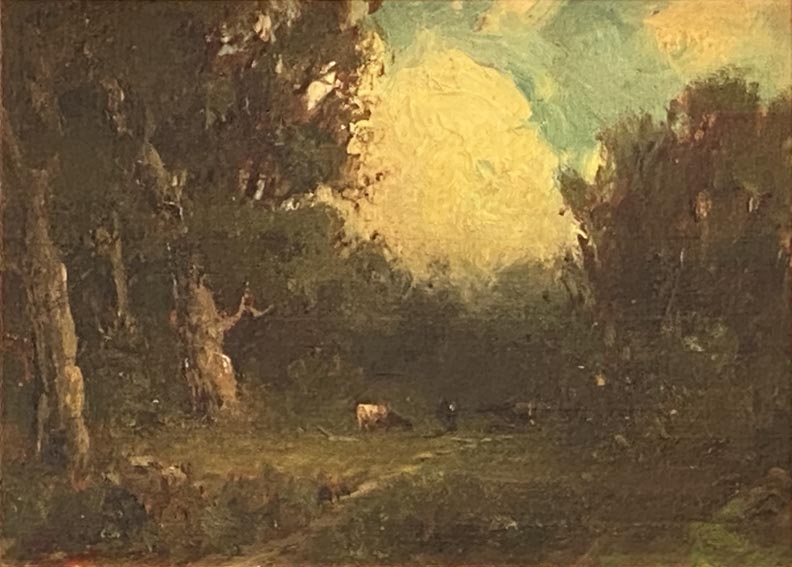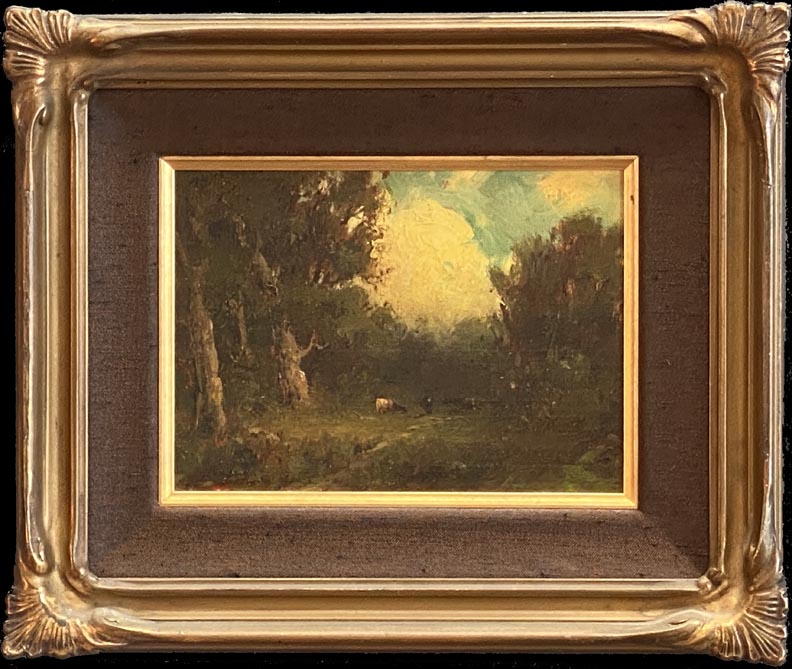
William Keith
|
William Keith was born in 1838 in a small village near Aberdeen, Scotland. His father died before he was born, and his mother asked the aid of her parents to keep and care for the newborn. Keith's grandfather was a pillar of the Presbyterian Church, a stern, gruff, and solemn old time Presbyterian. Once returned to his mother, he continued to be raised in a strict religious fashion, filled with rote memorization of large portions of scripture.
But he did gain a lifelong love of reading, and became a skilled writer. In time, Keith would come to reject this strict training. Later on, he developed his distaste for nit-picking details, a trait which found its way into his art. As an art teacher later on, Keith stressed to his students the importance of painting "from" nature, not copying it.
At age 12, he emigrated to New York with his mother and three sisters. He remained during his teenaged years in New York, ending up as a junior engraver for Harper and Brothers. Although none of the engravings in Harper's Weekly bears Keith's signature, it is believed his apprentice status precluded him from signing his work. Keith is believed to have arrived as a steerage passenger in San Francisco on June 2, 1859.
|
He began his California life on the bottom rung, steering clear of doing service in the Civil War, choosing instead to work as an engraver, and continuing to train for his life as a painter. He married "Lizzie" Emerson, a ship captain's daughter and distant relative of Ralph Waldo Emerson.
As Keith began promoting himself as a San Francisco painter of landscapes, he had some stiff competition. Charles Christian Nahl, Frederica A. Butman, Virgil Williams, along with up and comer Thomas Hill were also major voices in the art colony of San Francisco. After the Civil War, Butman, Hill, and Williams left town, and Keith worked to fill the vacuum. During the 1860's, he painted watercolors at first, but later on moved to oils. It was at this time the transcontinental railroad was opened, and California began filling with new travelers. The Oregon Navigation and Railroad Company commissioned Keith to paint the dramatic scenery of the Northwest to promote their railroad. Keith later said of this experience, "I was suddenly revealed to myself," and upon his return to San Francisco, he established himself as a full time artist.
In 1870, Keith visited Europe for a year, and then came back to the U.S., establishing himself in Maine and Boston, as did another former Californian, Thomas Hill. Because travel to California was now possible, Bostonians were eager to learn more of the state's natural wonders. Keith and Hill were ready and willing to help the Easterners gain a vision of the state's grandeur.
|

William Keith in studio at easel |
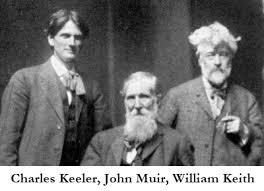
Charles Keeler, fellow Bohemian Club member, Berkeley author, poet and advocate of the Arts, author and naturalist, John Muir, and William Keith. |
Keith returned to San Francisco in May of 1872, but found himself again in competition. Hill returned about the same time, and a newcomer named Albert Bierstadt had established his studio.
In June of 1874, Keith began an extensive period of travel about California, often with his friend and fellow Scot, John Muir. On his first trip, Keith explored the highlands of Yosemite visiting Tuolumne Meadows, and venturing down Bloody Canyon to Mono Lake and on to the Owens Valley. Trips to all corners of the state followed, from Mt. Shasta in the north to Los Angeles in the South.
After Lizzie died in March of 1882, Keith was devastated. In June of 1883, he married a former art student, Mary McHenry. She was a lawyer, the first woman graduate of Hasting's Law School, but didn't practice after her marriage to Keith. She was active in the suffragette movement.
|
In 1902, Keith gained a railroad man for a patron and a friend, E. H. Harriman. Harriman invited Keith on several occasions to his lodge at Pelican Bay. In 1906, the earth in San Francisco shook, and the city burned. Keith lost 2,000 paintings in his San Francisco studio, not to mention thousands of his other works displayed in homes and public places throughout the city. But just an hour after the quake, Keith was busy painting in his Berkeley studio.
After the quake, Keith produced more work, some kindly and not so kindly received by critics. Many of these paintings were darker in tone, and some exhibited Keith's growing disregard for form. In 1907, he accompanied John Muir to Yosemite to visit Hetch Hetchy Canyon, and produced some very bright paintings of its majesty, probably in an effort to support Muir's campaign to block the dam and reservoir planned for the valley. After this journey with Muir, Keith continued to paint, but his pace lessened. He fell ill in 1910, and died on April 13, 1911.
The California painted by Keith was pristine, untouched and unspoiled by development. Keith was a master and yet a humble laborer.
Source: William Keith, The Saint Mary's Collection, by Alfred C. Harrison Jr., 1988. |
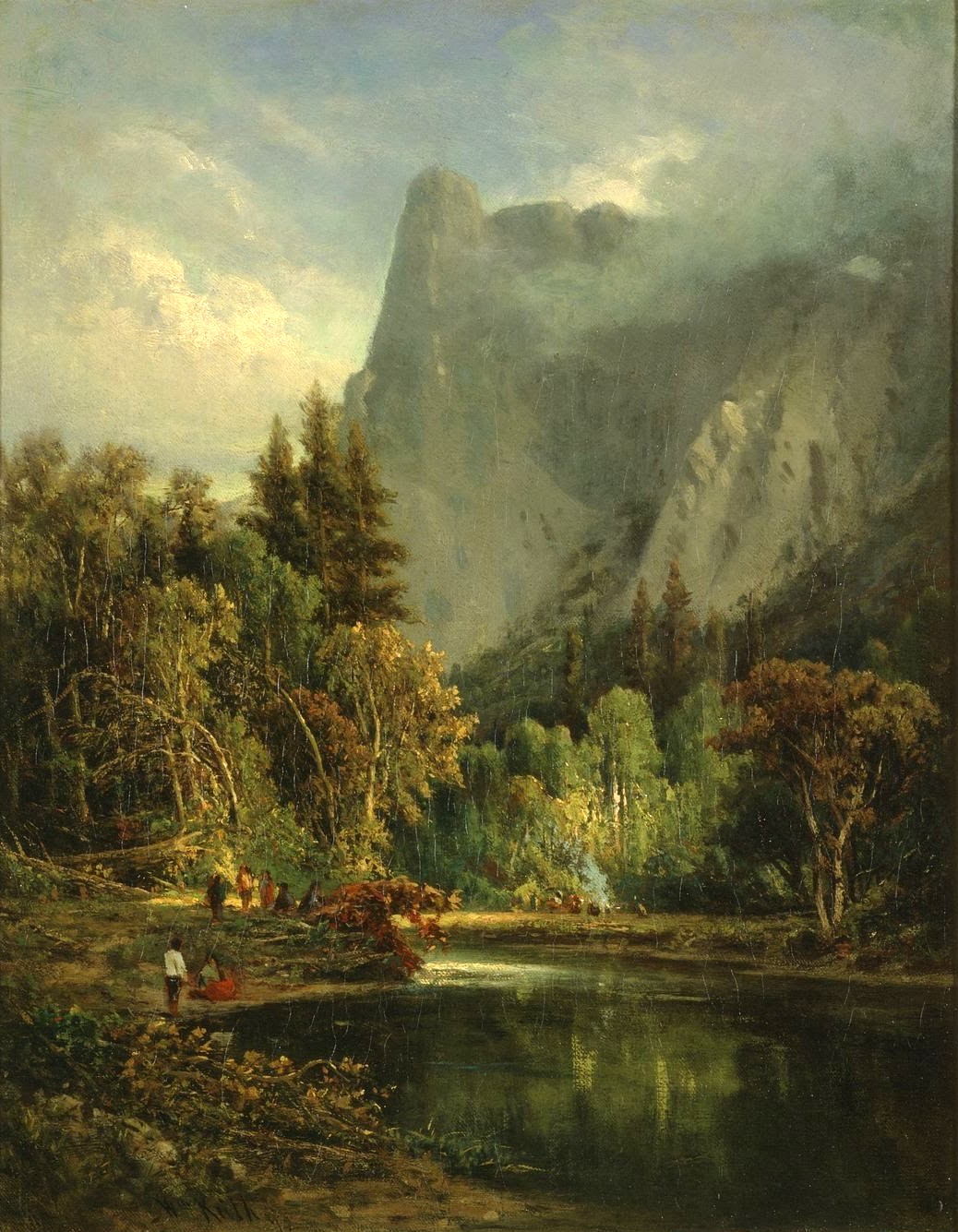
William Keith, Sentinel Rock, Yosemite |
